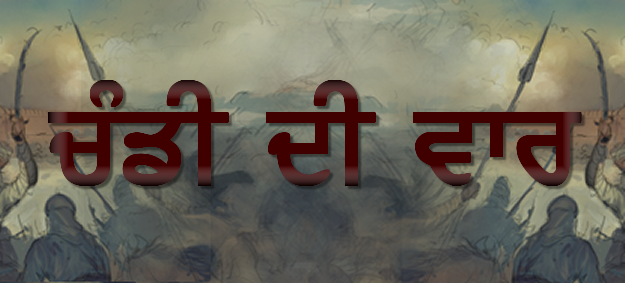
To all the Abhilakees (ones preparing for Amrit), there are a few things to share with you, just so that you can get a further understanding of what Amrit is and what we need to sacrifice. Please put this in mind that you are going to ask for Amrit it does not mean that we are 100% that you will be taking Amrit that night. It’s a blessing, It’s only when Guru Gobind Singh Ji wants to give it to you not when you want it. Some brief points are below as basic advice. If one wants to know more then please ask other Gursikhs.
AMRIT-VELA
Guru Ji says:
ਗੁਰ ਸਤਿਗੁਰ ਕਾ ਜੋ ਸਿਖੁ ਅਖਾਏ ਸੁ ਭਲਕੇ ਉਠਿ ਹਰਿ ਨਾਮੁ ਧਿਆਵੈ ॥
"One who calls himself a Sikh of the Guru, the True Guru, shall rise in the early morning hours and meditate on the Lord's Name."
(SGGS - Ang 305)
The Gurbani line above by Guru Ram Daas Ji explains itself. Guru Ji is saying that a person who wakes up at Amritvela is the only Sikh. An Abhlaikee Sikh should wake up Amritvela before the Amrit Sanchaar (Amrit ceremony) for at least a few months or even a year etc, so that one does not find much difficulty in waking up after being blessed with Amrit. If one has not woken up Amritvela before taking Amrit one will find it very hard, not sayings it’s not possible. There is no fixed time for Amritvela as it depends on the sun. People may wake up at 5am, 4am, 3am, or earlier. The main objective is to wake up before everyone else does in the world, i.e. sacrifice one's sleep for Waheguru.
ਫਰੀਦਾ ਪਿਛਲ ਰਾਤਿ ਨ ਜਾਗਿਓਹਿ ਜੀਵਦੜੋ ਮੁਇਓਹਿ ॥
ਜੇ ਤੈ ਰਬੁ ਵਿਸਾਰਿਆ ਤ ਰਬਿ ਨ ਵਿਸਰਿਓਹਿ ॥੧੦੭॥
"O Fareed! If you do not awaken in the early hours before dawn, you are dead while yet alive. Although you have forgotten God, God has not forgotten you. ||107||"
(SGGS - Ang 1383)
Amritvela normally starts around 2am waking up earlier is your own kushi (happiness). To help waking up one should:
* Eat less before going to sleep and eat before 7pm or so
* Sleep early
* You could also drink a lot of water before sleeping, so when the alarm goes off you will have to go to the toilet
* Put your alarm further away from your bed so that you will have to get out of your bed and walk to switch it off.
ISHNAAN
Having an ishnaan (bath/shower) at Amritvela is a MUST.
ਉਦਮੁ ਕਰੇ ਭਲਕੇ ਪਰਭਾਤੀ ਇਸਨਾਨੁ ਕਰੇ ਅੰਮ੍ਰਿਤ ਸਰਿ ਨਾਵੈ ॥
"Upon arising early in the morning, he is to bathe, and cleanse himself in the pool of nectar."
(SGGS - Ang 305)
Some Gursikhs advise to have a shower in cold water so that it wakes you up and it also requires courage. It is VERY IMPORTANT to Japp Naam (repeat the Divine-Name) whilst having an ishnaan other wise there is no use. Naam is the only thing that makes our day to day chores accepted.
ਤਿਨ ਕਾ ਖਾਧਾ ਪੈਧਾ ਮਾਇਆ ਸਭੁ ਪਵਿਤੁ ਹੈ ਜੋ ਨਾਮਿ ਹਰਿ ਰਾਤੇ ॥
"The food and clothes, and all the worldly possessions of those who are attuned to the Lord's Name are sacred."
(SGGS - Ang 648)
When taking an ishnaan it is very important to have all the Panj Kakkaars (5 Ks) on the body. Also having a keshi ishnaan (washing the hair) is a MUST everyday. This can be done by having bathing the body first and the Keski (short turban) on top of your head, also wrapping the Kirpan around the head. When changing the Kachhera one needs to take one leg out put it in the clean Kachhera and then the other leg out and do the same.
Important: The kachhera must not leave the body; doing this is a kurehit (sin) it can be fixed by doing Ardaas, by asking for forgiveness. This also goes for the Kanga, if the Kanga accidentally falls on to the ground, wash it and do Ardaas. Doing paatths such as Jap ji Sahib, Chaupai Sahib can also be recited before asking for forgiveness.
When one has a keshi ishnaan (bathing the hair), one should wrap their Keski (short turban) around their waist, putting the Kanga inside the Keski, or any other way but making sure that the kakkaars don’t leave your body.
KESKI
Regardless whether you believe Keski as a kakkaar (one of the 5 Ks) or not, it is very important that both genders wear a Keski at all times. The disease of ignorance has crept into the Singhs, where Singhs have started to wear a patka rather then a beautiful dastaar. Imagine a Singh walking into the Amrit Sanchaar with his hair as a knot on the back of the head or even a plait. If this is not acceptable for a Singh then why is it acceptable for a Singhni of Guru Gobind Singh Ji? The key point to remember here is that one cannot protect their Kesh (hair) without a Keski/dastaar (turban).
ਨਾਪਾਕ ਪਾਕੁ ਕਰਿ ਹਦੂਰਿ ਹਦੀਸਾ ਸਾਬਤ ਸੂਰਤਿ ਦਸਤਾਰ ਸਿਰਾ ॥ 12 ॥
"O person of God! Purify the mind what is impure (with bad thoughts) “this is the religious tradition through which you can experience the Lord's Presence. (Abandoning circumcision, mutilation and deferment of the body etc) preserve a complete appearance with a turban on your head" this becomes the way to maintain respect and honour. ||12||"
(Ang 1084)
ਕੰਘਾ ਦੋਨੋ ਵਕਤ ਕਰ ਪਾਗ ਚੁਨੈ ਕਰ ਬਾਂਧਈ ॥
ਦਾਤਨ ਨੀਤ ਕਰੇਇ ਨਾ ਦੁਖ ਪਾਵਹਿ ਲਾਲ ਜੀ ॥
"Comb your hair twice a daily and retie your turban each time your wear it.
Clean your teeth daily and this way you will not suffer pain."
(Rehatnama Bhai Nand Laal Ji)
Believing Keski as a kakkaar or not, it is very important that one keeps Keski rehit (discipline).
JAPPING NAAM
It is very important to japp (repeat) a lot of Naam (the Divine-Name), as Sri Guru Granth Sahib Ji tells us to japp naam, time and again.
ਏਕੋ ਨਾਮੁ ਹੁਕਮੁ ਹੈ ਨਾਨਕ ਸਤਿਗੁਰਿ ਦੀਆ ਬੁਝਾਇ ਜੀਉ ॥੫॥
"The One Name is the Lord's Command; O Nanak, the True Guru has given me this understanding. ||5||"
(SGGS- Ang 72)
At Amritvela one should japp naam for at least 1 hour sitting. It is also important to do some sitting of Naam Abhiyaas (repetition of Naam) some other time during the day. Doing Naam Abhiyaas before going to sleep is a must as it will carry on unconsciously throughout the night, which will make it easier for one to wake up again. One can go into a lot of depth on the subject of Naam; it’s the key thing in Sikhi. Without Naam one will find Sikhi very hard and one may even begin to question the concept of Naam.
TALKING LESS
One needs to stop wasting time and speak less and act more. A lot us of can talk about Sikhi but when it comes to implementing and practising Sikhi then we fall short. By talking less idle talk, not eating more than your body needs to, and not sleeping more than you have to, one can increase one's jeevan (spiritual life) and also one's Naam Abhiyaas.
ਬਹੁਤਾ ਬੋਲਣੁ ਝਖਣੁ ਹੋਇ ॥
"To speak too much and babble is useless."
(SGGS - Ang 661)
A lot of us talk about things that we don’t really need to talk about which will take us away from Naam. A second without Naam is like years of separation. We spend hours talking about useless and meaningless things that can be avoided and spent talking about more productive things. How much kirpaa (blessing) would it be to talk about Sikhi and Gurmat, or japp naam for those hours in the Saadh Sangat (Company of the Holy).
SANGAT (COMPANY)
It is very important to stay in the Sangat and visit the Sangat every single day, to obtain true peace of mind.
ਜਿਨਿ ਹਰਿ ਧਿਆਇਆ ਤਿਸ ਨੋ ਸਰਬ ਕਲਿਆਣ ਹੋਏ ਨਿਤ ਸੰਤ ਜਨਾ ਕੀ ਸੰਗਤਿ ਜਾਇ ਬਹੀਐ ਮੁਹੁ ਜੋੜੀਐ ॥
"One who meditates on the Lord obtains all pleasures and comforts; let us go each and every day, to sit in the Saints' Society."
(SGGS - Ang 550)
Doing Amritvela with the Sangat has a lot of benefits, one will find that they can do more Naam Abhiyaas, find it easier to wake up Amritvela, doing more Sangat will have an increased effect on one's Naam Abhiyaas, for example if there are 5 Gursikhs doing Naam Abhiyaas for an hour then that would equal to one Gursikh doing Naam Abhiyaas for 5 hours. Some get into hankaar (ego) and think that there is no need whatsoever to have the support of the Sangat, but this is a foolish mistake and one can easily fall. So stay in the true Sangat - where there is Naam and Bani there is true Sangat.
BIBEK REHAT (CONSCIOUS LIVING)
In Sikhi, there is an important concept known as 'bibekta'. Bibek literally means from two to one. Bibek is a God-given conscience that allows a Sikh to discriminate between right and wrong, i.e. knowing what is good and what is bad.
Not only is Bibekta applied in a Sikh's everyday life - for example, knowing it is wrong to cut one's hair or that it is right to do Nitnem in the morning - but it can also be applied to what one eats. Bujjar kurehats (cardinal taboos) and other Rehat Maryada (Code of Conduct) rules come into play here.
ਬਾਬਾ ਹੋਰੁ ਖਾਣਾ ਖੁਸੀ ਖੁਆਰੁ ॥
ਜਿਤੁ ਖਾਧੈ ਤਨੁ ਪੀੜੀਐ ਮਨ ਮਹਿ ਚਲਹਿ ਵਿਕਾਰ ॥੧॥ ਰਹਾਉ ॥
O Baba! The pleasures of other foods are false, by eating which, the body is ruined, and wickedness and corruption enters into the mind. ||1||Pause||
(SGGS- Ang 16)
Sikhs must abstain from alcohol and tobacco, that is a given. Arguments ignored, most Sikhs also agree that it is against Sikhi to consume meat, fish, or eggs. Gurbani clears up all doubts and clearly prohibits the slaughter and eating of animals. A Hukamnama (edict) issued by Guru Hargobind Sahib Ji states, "Maas Machee De Nere Nehi Avanaa" next to his signature (note: see Prof. Ganda Singh's book: 'Hukamname').
So the most basic Bibek Rehat a Sikh can keep is to abstain from meat, fish, eggs, foods with animal derivatives, alcohol, tobacco, and non-medicinal drugs. Also not eating from the hands of smokers.
ਵੇਦੀਨਾ ਕੀ ਦੋਸਤੀ ਵੇਦੀਨਾ ਕਾ ਖਾਣੁ ॥
ਸਿਫਤੀ ਸਾਰ ਨ ਜਾਣਨੀ ਸਦਾ ਵਸੈ ਸੈਤਾਨੁ ॥
"Keeping friendships with the unrighteous, and eating the prepared food from the unrighteous. Those people do not know the value of the Lord's Praises (i.e. their internal Naam Jaap stops), and Satan (desires, anger, greed, emotional attachment, and ego) takes residence in the mind."
(SGGS - Ang 790)
After this level of Bibek, there are higher levels. For example, many Amritdharis abstain from eating out at restaurants.
There are also other rehats, depending on how strict an individual wishes to be and how much of Guru Sahib's maryada they are able to follow. These rehats include:
* Eating cooked food from Amritdharis' hands exclusively
* Not eating any processed or machine made foods
* Eating only in Sarabloh (Iron/Carbon Steel)
Whatever level of orthodoxy an individual feels is right for them, a Gursikh should at least observe the minimum. The reason Gursikhs increase the level of observing Rehat is only to strengthen their mind, to avoid it wandering whilst in connection with the Divine and to improve concentration. If these Rehits (or any other) are kept for any other reason (for show etc) they become a hindrance to us and slow down progression, which in return becomes hypocrisy (pakhand) and ego. This is the reason why alot of Gursikhs keep their personal Rehit Gupt (secret), to avoid collision with ego.
WATCHING TV
One who wants to know the possible negative side-effects of TV should read Baba Harnaam Singh's book, Sai Kinayhi-aa, it has a chapter where it shows the reader the effect that television can have on one’s jeevan. It can lead to the 5 vices attacking us from inside, take us away from Naam, and make it harder to concentrate on Naam Abhiyaas. Watching television till late will prevent one from waking up at Amritvela. By staying away from television as much as you can or limiting yourself to only watching selected programmes like the News, documentaries and educational items, one's jeevan will greatly increase and the love for our Guru. If watching meaningless films and television dramas helps you to japp Naam then carry on watching more, BUT be honest with yourselves. Whatever you do, if anything stops you from japping Naam then stay away from it. It’s simple! Same applies for MSN, social networking sites etc. You must way up the benefits and negatives for anything, and then make the right decision that benefits your spiritual progress. Nothing is intrinsically bad, but it is important to keep everything in balance with your spirituality.
AMRIT SANCHAAR
Amrit Sanchaar is the example of how you need to live your life. You are going to sacrifice your mind, body and wealth.
ਤਨੁ ਮਨੁ ਧਨੁ ਸਭੁ ਸਉਪਿ ਗੁਰ ਕਉ ਹੁਕਮਿ ਮੰਨਿਐ ਪਾਈਐ ॥
"Surrender body, mind, wealth, and everything to the Guru; obey the Order of His Will, and you will find Him.
(SGGS - Ang 918)
Worldly bonds fall into categories.
Mind - five vices, jealousy, hatred, deception etc
Body - sleeping, eating and talking; Guru jee has advised us to reduce these.
Possessions and relatives - house, wealth, wife, sons, daughters etc
It is the beginning of your new life that the Guru has given you. At most Amrit Sanchaars you will be there through out the Amritvela meaning from now on you have to wake up at Amritvela, you will be wearing the 5 kakkaars and baanaa (uniform) which one will need to keep. All these things are the start of your new life we need to sacrifice them. Make the most of your Amrit sanchar and go in there with full nimarta (humility), the more humility you have, the more you will get from your Guru! It is advisable to do as much Mool Mantar Abhiyaas (repetition) during the days leading up to the Amrit Sanchaar; this will give you a good foundation and help you.
Take care and all the best. Hope Guru Ji blesses the abhliakis with the gift of Amrit, firm Amritvela, and a life absorbed in the sweetness of Naam.












i like it very much. bhut wadiya likheya hai very help ful.
waheguru tuhade sir te hath rakhe
Bahut helpful hai ji